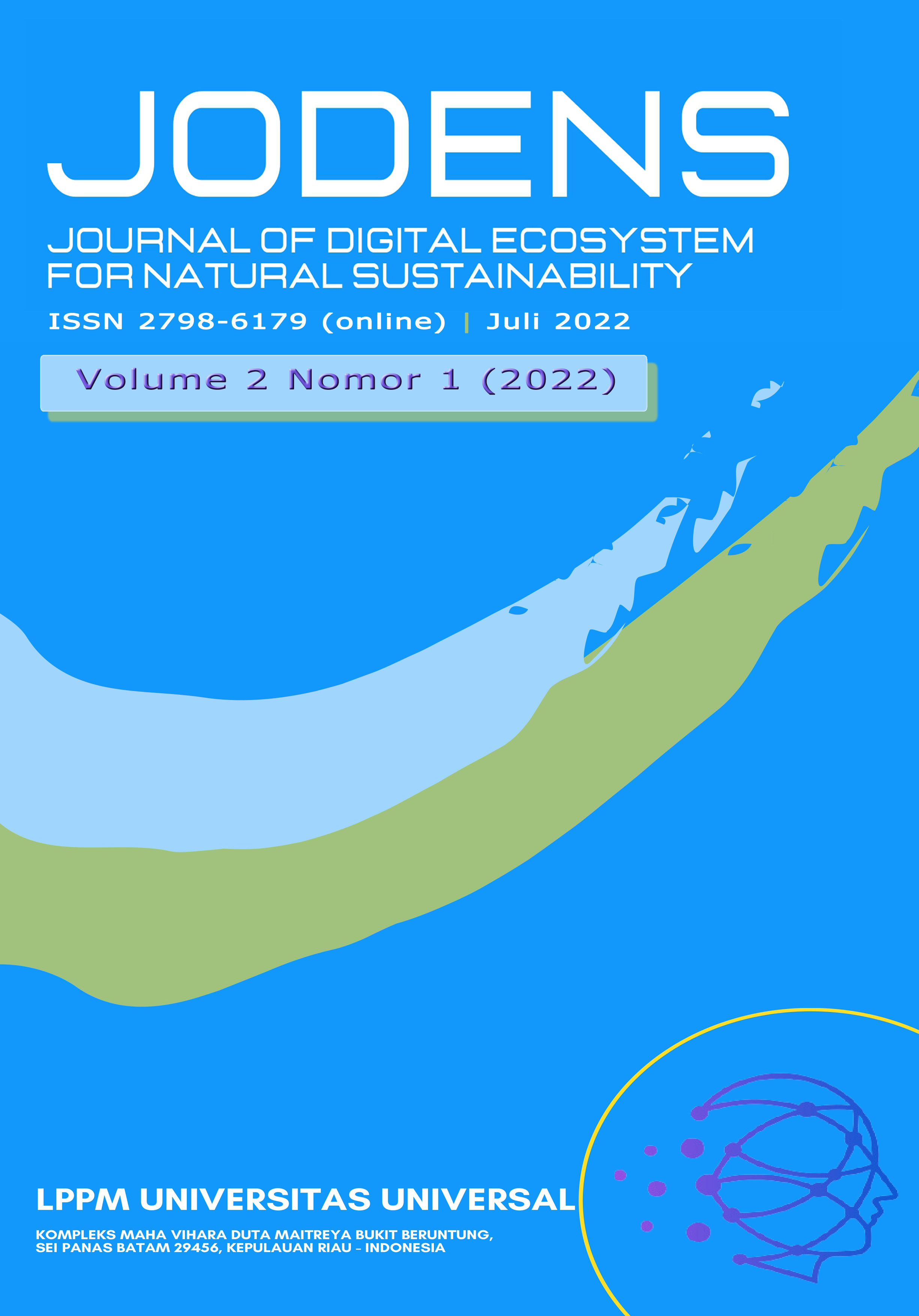Analysis of the Relationship between Social Media Addiction with Social Anxiety and Interpersonal Relationships in Adolescents
DOI:
https://doi.org/10.63643/jodens.v2i1.80Keywords:
Social Media Addiction, Social Anxiety, Interpersonal RelationshipsAbstract
This study aims to analyze the relationship between social media addiction on social anxiety and interpersonal relationships in adolescents. This study uses a quantitative approach with predictive correlation method. The instrument used in this study is a differential semantic scale for social media addiction, and a likert scale for social anxiety and interpersonal relationships. The research sample was 220 high school students in Batam City, Indonesia, who were selected by cluster quota random sampling. The results showed that social media addiction did not contribute to social anxiety with a t-value of -0.98, and social media addiction did not contribute to interpersonal relationships with a t-value of -1.05.
References
Damar, A. M. "3 Fakta Mengejutkan Pengguna Internet di Indonesia," Liputan 6, p. 20, February 14, 2016. [Online]. Available: Tekno Liputan 6, http://tekno.liputan6.com. [Accessed August 11, 2016].
Putra, Y. M. “Ini Dampak Positif dan Negatif Pokemon Go.” Republika, p. 12. July 16, 2016. [Online]. Available: Trendtek Republika, http://trendtek.republika.co.id. [Accessed August 11, 2016].
Karr-Wisniewski, P., & Lu, Y. (2010, March 23). When More Is Too Much: Operationalizing Technology Overload and Exploring Its Impact on Knowledge Worker Productivity. Computers in Human Behavior, 26(5), 1061-1072.
Yusrini, F. “Fenomena Karin 'Awkarin' Novilda dan 'Generasi Swag', Inilah Alasan Kenapa Para Orang Tua Perlu Cemas.” Femina, p. 4. July 25, 2016. [Online]. Available: Femina, https://femina.co.id. [Accessed August 11, 2016].
Batubara, H. “Ini Analisa Psikolog Soal Fenomena Awkarin dan Anya Geraldine di Media Sosial.” Detik, p. 4. September 21, 2016. [Online]. Available: Detik News, https://news.detik.com. [Accessed August 11, 2016].
Ferraro, G., Caci, B., D'Amico, A., & Blasi, M. D. (2007, May 2). Internet Addiction Disorder: An Italian Study. CyberPsychology & Behavior, 10(2), 170-175.
Caplan, S. E. (2010, April 3). Theory And Measurement Of Generalized Problematic Internet Use: A Two - Step Approach. Computers In Human Behavior, 26(5), 1089 - 1097.
Griffiths, M., Kuss, D., Billieux, J., & Pontes, H. (2015, November 2). The Evolution Of Internet Addiction: A Global Perspective. Addictive Behaviors, 53, 193 - 195.
Soliha, S. F. (2015, January). Tingkat Ketergantungan Pengguna Media Sosial dan Kecemasan Sosial. Jurnal Ilmu Komunikasi dan Interaksi, 4(1), 1-10.
Aladwani, A. M., & Almarzouq, M. (2016, March 5). Understanding Compulsive Social Media Use: The Premise of Complementing Self - Conceptions Mismatch With Technology. Computers in Human Behavior, 60, 575-581.
Abadi, T. W., Sukmawan, F., & Utari, D. A. (2013, September 2013). Media Sosial dan Pengembangan Hubungan Interpersonal Remaja di Sidoarjo. KANAL, 2(1), 1-106.
Latan, H. (2012). Structural Equation Modeling. Konsep dan Aplikasi Menggunakan Program Lisrel 8.80. Bandung, Indonesia: Alfabeta.
Azwar, S. (2012). Reliabilitas dan Validitas. Yogyakarta: Pustaka Pelajar.
Sugiyono, P. D. (2006). Model Penelitian Pendidikan (7th ed.). Bandung: Alfabeta.
Bushman, B. J., & Anderson, C. A. (2002, December). Violent Video Games and Hostile Expectations: A Test of The General Aggression Model. Personality and Social Psychology Bulletin, 28(12), 1679-1686.
Bushman, B. J., & Baumeister, R. F. (1998, July). Threatened Egotism, Narcissism, Self-Esteem, And Direct And Displaced Aggression: Does Self-Love Or Self- Hate Lead To Violence? Journal of Personality and Social Psychology, 75(1), 219-229.
Roberts, A., & Good, E. (2010, December). Media Images and Female Body Dissatisfaction: The Moderating Effects of The Five-Factor Traits. Eating Behaviors, 11(4), 211-216.
Juvonen, J., & Gross, E. F. (2008, September). Extending The School Grounds?—Bullying Experiences in Cyberspace. Journal of School Health, 78(9), 496- 505.
Mitchell, S. M., Jahn, D. R., Guidry, E. T., & Cukrowicz, K. C. (2015, December). The Relationship Between Video Game Play And The Acquired Capability for Suicide: An Examination of Differences By Category of Video Game and Gender. Cyberpsychology, Behavior, and Social Networking, 18(12), 757- 762.
McCord, B., Rodebaugh, T. L., & Levinson, C. A. (2014, May). Facebook: Social Uses And Anxiety. Computers in Human Behavior, 34, 23–27.
Andreassen, C. S., Torsheim, T., Brunborg, G. S., & Pallesen, S. (2012, April). Development Of A Facebook Addiction Scale. Psychological Reports, 110(2), 501-517.
Pollet, T. V., Roberts, S. G., & Dunbar, R. I. (2011, April). Use of Social Network Sites and Instant Messaging Does Not Lead to Increased Offline Social Network Size, or to Emotionally Closer Relationships With Offline Network Members. Cyberpsychol Behaviour Social Network, 14(4), 253-258.
Porter, K., Mitchell, J., Grace, M., Shinosky, S., & Gordon, V. (2012). A Study of the Effects of Social Media Use and Addiction on Relationship Satisfaction. Effects of Social Media Use on Relationship Satisfaction, 2(1), 1-27.
Downloads
Published
How to Cite
Issue
Section
License
Copyright (c) 2022 R Widya Henisaputri

This work is licensed under a Creative Commons Attribution 4.0 International License.
















